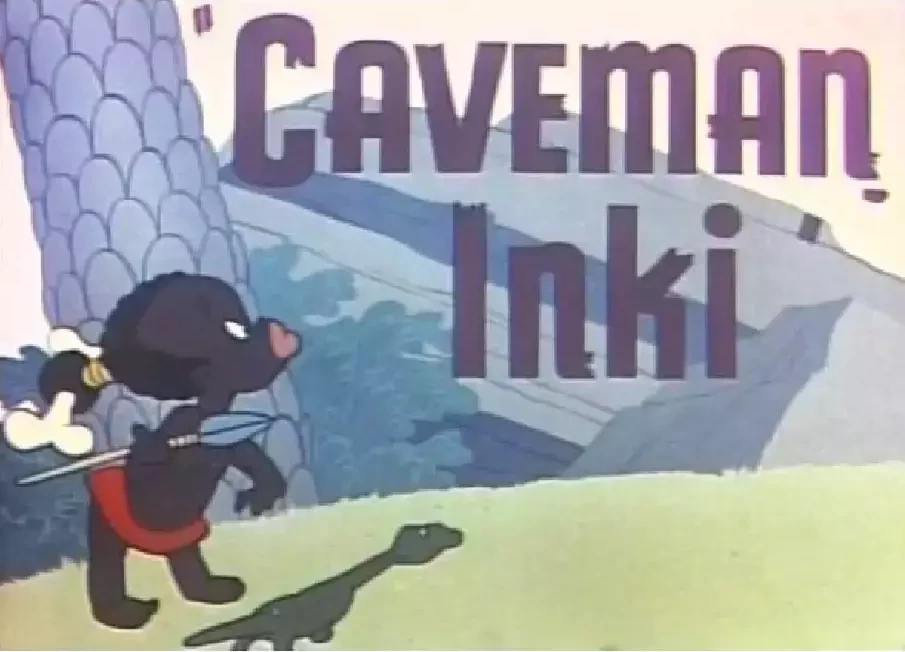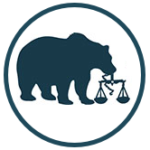|
Listen to this Article
|
By Larry Organ & Bernard Alexander.
On October 4, 2021, a San Francisco federal Jury awarded Owen Diaz $6.9 million in emotional distress damages and $130 million in punitive damages, in Diaz v. Tesla, Inc., Case No. 3:17-cv-06748-WHO. This verdict has been acknowledged as the largest race harassment verdict in American history. For over nine months, Owen Diaz endured a hostile work environment based on race. The harassment included near daily use of the N-word, threats of physical harm and written racial epithets.
In response to a motion for new trial, on April 13, 2022, the District Court judge issued an order denying a motion for new trial but reducing the emotional distress damages from $6.9 million to $1.5 million and reducing the punitive damages to a ratio of 9:1 or $13.5 million for a total remittitur verdict of $15 million. After due consideration of the competing interests and Owen’s prospects for success on appeal, Owen Diaz rejected the remittitur and elected to retry damages. The new damages only trial is scheduled for March 27, 2023. The following discussion provides an overview of the case and the reasoning for retrying damages in this groundbreaking racial harassment jury verdict.
1- Racial Harassment of Mr. Diaz at Tesla’s Fremont, CA Factory.
Owen Diaz was an elevator operator at Tesla’s factory in Fremont, California, from June 2015 to March 2016. Initially, Owen was thrilled to have the opportunity to have a good job making a difference on global warming. Shortly after he started, he was promoted to a lead.
The racist conduct to which Owen was subjected in this case is disturbing. Tesla’s Fremont factory was a hotbed of unrelenting racial hostility, which the evidence showed Tesla condoned at its highest levels. Owen was subjected almost daily racial epithets by co-workers and supervisors. He constantly saw racist graffiti scrawled in multiple bathrooms. Two of his supervisors referred to him as an N-word over thirty times each. Owen complained to his supervisor approximately seven times, complaints which trickled up to managers and Tesla HR who failed to stop it from continuing.
A. Racist Statements by Co-Workers
One co-worker repeatedly assailed Owen using racial epithets in Spanish, calling Owen a “porch monkey” and “n****r” (in both Spanish and English), and making Owen feel “less than human.” Owen complained to a supervisor, who spoke to witnesses who confirmed use of these slurs. In the face of Tesla’s inaction, co-workers joined in the racial abuse, with 8-10 of them repeatedly calling Owen “n****r,” without intervention from Tesla management.
One day, when Owen was bringing lunch to his son Demetric—who worked in a different part of the Tesla factory—Owen witnessed Demetric’s white supervisor yelling at him, “I can’t stand all you [f***ing] [n****rs].” Owen identified this as the gut-wrenching event that “broke me and I think my son.”
B. Racist Conduct by Supervisors
In October 2015, one of Owen’s supervisors added physical threats to the racial harassment. The supervisor cornered Owen inside a freight elevator, screaming racial slurs and yelling “[n****rs] aren’t shit,” bringing his balled-up fists within inches of Owen’s face. Owen defensively pointed to a video camera in the elevator, to warn and prompt the supervisor to back down. (Despite reporting this incident, Tesla did not investigate and failed to preserve this camera footage.) But harassment of Owen persisted.
In January 2016, this same supervisor drew a racist effigy and left it for Owen to find in front of the freight elevator doors Owen regularly used. Owen immediately recognized the cartoon with oversized lips and a bone in its hair as a dated racist message. Owen’s “stomach dropped” as though someone had kicked him. During his trial testimony, the supervisor described the effigy as a rendition of “Inki the Caveman,” a midcentury caricature that Warner Brothers pulled from television in the 1950s for being too racist. During cross examination of the supervisor, his drawing on recycled cardboard, as left for Owen, was shown next to the cartoon figure “Cavemen Inki”, the supervisor’s admitted inspiration for his drawing.

Although this supervisor claimed to have apologized to Owen, witnesses confirmed that what he actually said was, “You people [i.e., Black people] can’t take a joke.” Soon, the supervisor was back on the job. A Tesla superficial investigation claimed that a written warning had been issued, but no evidence of any written warning was actually introduced at trial. At the time of trial, the supervisor had been elevated from an independent contractor to a direct employee receiving the enhanced benefits of working for Tesla.
Owen was also harassed by a different supervisor who, in August 2015, started calling him “n****r” and “boy,” more than 30 times, often coupled with demeaning race-based comments like, “You n****rs are lazy.” This supervisor continued to harass Owen until Owen quit, no longer able to endure the racially hostile work environment.
C. Racist Graffiti
Only two days into the job, Owen saw the racial slur “n****r” scrawled throughout the bathroom stalls. Those detestable epithets remained throughout his employment, as did equally demeaning graffiti such as swastikas and statements like “Death to all [n****rs].” Despite Owen complaining about this graffiti on multiple occasions, Tesla took no corrective action to remove the racist graffiti exposing Owen to racist graffiti every time he needed to relieve himself.
D. “Me Too” Witnesses
Owen Diaz was not the only Black worker at Tesla to experience racial harassment. Three supervisors testified to routinely witnessing use of the N-word throughout the Fremont factory.
Due to the immense size of the Fremont factory, company golf carts were provided so that supervisors could travel throughout the cavernous facility. One supervisor noted that in his constant travels he heard the N-word on a daily basis. He specifically described two instances of egregious racist conduct. In one instance, the supervisor reported that a subordinate called him “n****r,” yet his supervisors and manager took no action. Instead, Tesla awarded the harasser a promotion. In the second, the supervisor sat in human feces that had been left on the supervisor’s golf cart seat by a co-worker. The supervisor complained to his manager and demanded that Tesla investigate by checking multiple, ever-present security cameras. Tesla HR staff denied the video captured the incident despite two separate security cameras being focused on the area. Despite the stomach-churning nature of this harassment, no training or other corrective action was ever taken in response. This same supervisor also reported seeing swastikas in the bathrooms and tattooed on a co-worker’s forehead.
Another supervisor to whom Owen complained testified that he too heard “n****r” on a daily basis as he “walk[ed] around the Tesla Factory.” He also impeached one of the supervisors to whom Owen complained by confirming that Owen’s co-workers corroborated Owen’s complaint that the N-word was directed him. This same supervisor testified that one of Owen’s harassers regularly used the word “mayate” [the Spanish equivalent of the N-word] and “chongo.”
A third manager testified that he too heard “n****r” on a daily basis throughout the factory. He testified that Tesla managers did not impose sufficient discipline in response to racist conduct.
2- Tesla’s Reprehensible Conduct
Allowing Black employees to be subjected to violent threats and vile slurs in the workplace is reprehensible enough. But that reprehensibility is heightened by Tesla’s defense, deliberately denying all responsibility for conduct occurring in its Fremont factory. Tesla knew full well that the use of racial slurs and offensive racial imagery inside the workplace was wrong. When faced with concrete instances of racial abuse, instead of taking prompt, effective remedial action, Tesla feigned ignorance of the conduct and allowed it to continue. At best, Tesla issued half-hearted, ineffective warnings that had no impact in dissuading the conduct of its serial harassers. At worst, Tesla allowed managers, to whom Owen recited the details of the abuse he suffered, to punish him for objecting to being the target of vituperative racial attacks. No employer conduct could be more intentional, or more reprehensible.
Overwhelming evidence presented at trial substantiated that Tesla supervisors and employees viciously harassed and intimidated Owen Diaz for months, while Tesla did nothing. When Owen initially complained to a supervisor about co-worker harassment, the supervisor softened his description of the harassment and undermined its validity by denying the existence of confirmed corroboration of use of the N-word towards Owen. When Owen complained about a supervisor using the N-word and physically threatening him, Tesla blamed Owen and took no action to protect him against future harassment. When that same supervisor later left the racist drawing to be found by Owen, Tesla pretended to reprimand that supervisor with a written warning it could not produce, only to later promote hire him as a direct employee with stock options.
Owen complained to a Tesla supervisor about restroom graffiti and use of racial slurs on many occasions, but Tesla management took no corrective action, which heightened Owen’s sense of helplessness while emboldening his harassers. Even at trial, a supervisor to whom Owen had complained insisted that he was unaware of any complaints of racial taunting—until the jury saw him impeached by his own email, an email discussing use of the N-word being “common talk” on the line.
3- The Emotional Impact on Owen Diaz
Owen Diaz is a 53-year-old Black man. Before he began working at Tesla, he was known to be confident, strong and proud, and nothing of a crybaby. Expert psychologist Dr. Anthony Reading testified that before working at Tesla, Owen had no psychological issues or difficulties. However, Owen found his supervisors’ racial abuse dehumanizing, describing the reference to him as “boy”—“a term that slave masters used against black people to let them know that they were [the slaveowners’] property”—even though “I’m a grown man.”
More generally, Dr. Reading testified how the use of racial slurs in the workplace creates a high risk of psychiatric injury, because they serve to erase a victim’s identity and carry “connotations of violence historically and also in the present context.” The supervisors’ use of racial slurs heightened these negative impacts and deepened Owen’s “sense of hopelessness.”
4- Trial and the Verdict
The case was tried in federal court before Judge William H. Orrick III, who allowed each side twelve hours to present their case. Brevity of time at trial tends to impose a greater burden of the party with the burden of proof and persuasion. It takes much less time to burst the balloon with a single defense prick, than to fill the balloon with evidence that both meets the burden of proof and persuades the jury that the Plaintiff should prevail.
At trial, Tesla adamantly refused to accept responsibility for what occurred inside the Fremont workplace, claiming Owen was the responsibility of staffing agencies through which Owen was hired and employed. Tesla also falsely claimed that Owen’s failure to place his complaint about the N-word in writing, was proof that he had not made the numerous verbal complaints, as claimed. Tesla also claimed that allowing his son to work at the Fremont factory indicated that use of the N-word had not occurred, or had occurred less frequently than Owen claimed, or did not cause the severe harm to Owen that he was claiming.
Plaintiff’s theme of the case was that rather than Tesla having a “Zero Tolerance policy” for racism as claimed, Tesla has a “Zero responsibility policy.” Owen was not impeached once at trial. In contrast, during each of the 5 days of testimony, Tesla witnesses were repeatedly impeached. Plaintiff’s counsel also used demonstrative exhibits including blowups of Defendant’s Opening PowerPoint slides to impeach Tesla’s opening statement.
In closing, Tesla told the jury to award zero damages. Mr. Alexander offered an impassioned closing, asking for punitive damages of at least 10% of the cash Tesla had on hand (i.e., $1,100,000,000) in response to Tesla’s “Zero responsibility” denials at trial.
After deliberating for approximately 3.5 hours, the Jury awarded $4.5 million in past emotional distress damages and $2.4 million in future emotional distress damages, and $130 million in punitive damages against Tesla.
5- The Legal Theory on Which Owen Prevailed
The Civil Rights Act of 1866, 42 U.S.C. § 1981, protects the equal right of “[a]ll persons” to “make and enforce contracts” without regard to race. Domino’s Pizza, Inc. v. McDonald (2006) 546 U.S. 470, 474. The jury found that Tesla violated Owen’s rights under Section 1981, by (1) subjecting him to a racially hostile work environment, and (2) failing to prevent racial harassment.
6- Tesla’s Motion for New Trial
Tesla’s post-trial briefing continued to present the same tired excuses, denials, and blame-shifting presented throughout trial, while offering nothing of substance to warrant rejection of the jury’s carefully considered special verdict. Several of Tesla’s arguments relied on evidence that wasn’t even presented at trial.
7- The Judge’s Remittitur from $136.9 Million to $15 Million
A federal judge has the authority to review the evidence underlying a jury’s damages verdict in response to a new trial motion, and to offer plaintiff a choice between either a new trial or a remittitur to an amount the Court concludes is the “maximum amount sustainable by the proof.” Oracle Corp. v. SAP AG (9th Cir. 2014) 765 F.3d 1081, 1094. The trial court noted that “great deference is owed to the jury’s verdict.”
With respect to damages, the trial court first explained “why Diaz is entitled to a relatively large emotional distress damages award,” setting forth some of the most powerful evidence demonstrating the hostile work environment that Tesla created and Owen endured, as well as reciting evidence that Tesla’s racial harassment was “severe and debilitating” and had a “profound” effect on Owen. Nonetheless, the Court concluded that the jury’s compensatory damage award of $2.4 million in future noneconomic damages and $4.5 million in past noneconomic damages was excessive, and that $1.5 million in compensatory damages was the “highest award supported by the evidence.”
With respect to the punitive damages award, the trial court concluded that “the Constitution permits a punitive-damages award of $13.5 million—nine times the amount of compensatory damages,” or a 9-1 ration of punitive damages to general damages.
In explaining its massive reduction of the jury verdict, the trial court opined that although “the jury is entitled to “great deference. . . its award of future damages is far out of proportion to the evidence and its award of past damages must be reduced too. . . . Accordingly, I conclude that the maximum amount supportable by proof to make Diaz whole for his emotional harm is $1.5 million.” In doing so, the Court compared Owen’s case to two other cases, Turley v. ISG Lackawanna, Inc. (2d Cir. 2014) 774 F.3d 140 and Passantino v. Johnson & Johnson Consumer Prod., Inc. (9th Cir. 2000) 212 F.3d 493, involving civil rights violations.
8- The Unfair Equities on Appeal
If Plaintiff Diaz were to have accepted the Court’s remittitur, he would be foreclosed from arguing to the Ninth Circuit that the remittitur amounts were too low, even though Tesla would be entitled to appeal on the grounds that those amounts were too high. See Donovan v. Penn Shipping Co. (1977) 429 U.S. 648, 650 (per curium). In other words, Owen would not have been able to argue that the trial court’s reductions were inappropriate and too substantial, while Tesla would retain the right to ask the Ninth Circuit to further reduce the compensatory and punitive damages below the $15 million determination of the trial court. The danger to Owen, after a second trial, is that the trial court might apply the same analysis to reduce the jury’s award after a second trial by way of remittitur.
9- Plaintiff’s Decision to Opt for a New Trial Rather than Accept Remittitur
The trial court provided an excellent analysis of the evidence at trial which supported a finding of liability and the general damages actually awarded by the jury. The trial court’s remittitur analysis shows that the Court’s decision to reduce compensatory damages to $1.5 million—less than a quarter of the amount awarded by the jury—as the maximum amount sustainable by the proof was flawed, and, Plaintiff believes, improperly influenced by the Court’s comparative analysis of jury verdicts from other jurisdictions.
Section 1981 does not contain any statutory caps on emotional distress or punitive damages. Plaintiff’s counsel contends that the federal judiciary evidences systematic bias in imposing caps or limits on the amount of damages that can be awarded to victims of race harassment. And, to the extent that the Court attempts to compare current verdicts with past verdicts from other jurisdictions, the Court adopts the baked-in implicit bias and discrimination that has influenced verdicts in other jurisdictions to be unreasonably low. Whereas a San Francisco jury of Plaintiff’s peers found general damages of $6.9 million, it is unreasonable to reduce Owen’s verdict based on findings made by juries in far-away jurisdictions that suffer from their own history of racial intolerance. The jury verdicts relied upon by the trial court to reduce Owen’s general damages award do not have any independent value that makes the finding by those juries more valid or compelling than the award issued by this California jury. For this reason, Owen seeks a second trial on damages hoping that another large verdict may compel the trial court, or perhaps the Ninth Circuit, to uphold higher damages awards in race harassment cases, particularly where the conduct causing the emotional distress is so disturbing and deliberate. Only if plaintiffs are willing to challenge such court reductions can the fight for equal treatment under the law be successful.
Authors:
Larry Organ is the founder of the California Civil Rights Law Group in San Anselmo, California. He has tried numerous civil rights cases and specializes in sexual and racial harassment trials.
Bernard Alexander III is the principal in Alexander Morrison + Fehr in Los Angeles, California. He specializes in trials of civil rights cases and is the former Chair of CELA.




